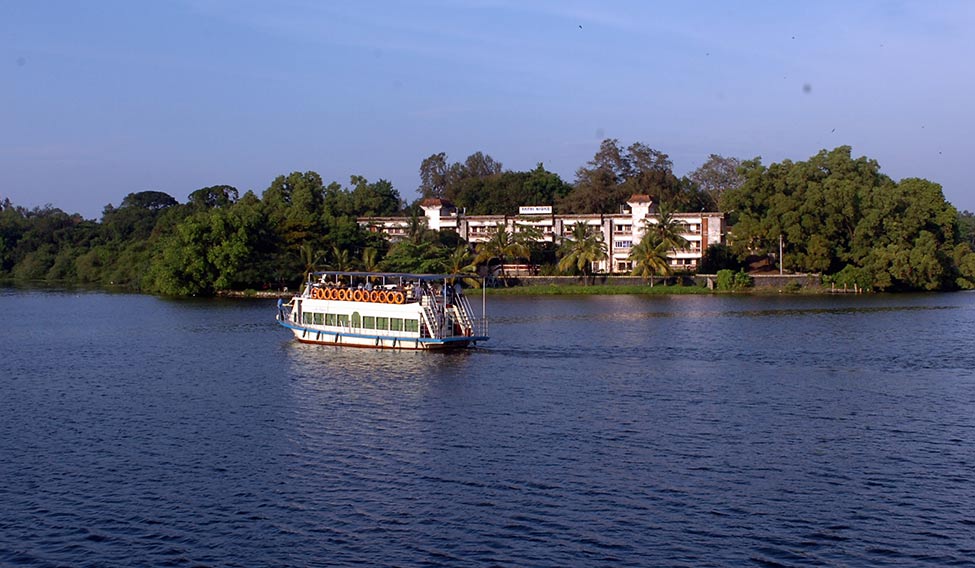Imagine stepping out of an airport and setting foot straight into a houseboat to enjoy the lush greenery of Kerala. Wait three years, and you can experience what it feels like.
The state government has green-lighted an ambitious waterway project connecting Thiruvananthapuram, the southernmost district in the state, to Kasaragod, the northernmost. Cochin International Airport Ltd has been tasked with executing the project by forming a special purpose vehicle, in which the government and CIAL have 49 per cent stake each. The remaining 2 per cent will go to private players. The government plans to raise the project cost of Rs 6,000 crore through either Kerala Infrastructure Investment Fund Board or foreign agencies.
Personally supervising the project is Chief Minister Pinarayi Vijayan, who has become more firm and confident after the High Court, on August 23, upheld a CBI special court order clearing him of all charges levelled against him in the SNC-Lavalin corruption case. Vijayan has set 2020 as the deadline for completion. “The CM has made it clear that he wants to travel from Kasaragod to Thiruvananthapuram through the waterway in 2020,” said Major Dinesh Bhaskaran, additional private secretary in the chief minister’s office, who is coordinating all projects undertaken by the government.
The project was first conceived more than 20 years ago. Successive governments announced many an inauguration date, but nothing happened on the ground. “The most important thing to make any dream project a reality is political will. This government, however, seems to be determined. Hope things will work out,” said Prasanth Nair, consultant (waterways) at National Transportation Planning and Research Centre (NATPAC) in Thiruvananthapuram.
If the project becomes a reality, a major chunk of goods transport can be diverted through waterways. Passenger services would follow. That will de-congest roads to a great extent. “Apart from its contribution to tourism, the waterways will bring down the cost of goods transport and pollution levels drastically,” said Dr Ravi Raman, member of the State Planning Board. “The waterway has the potential to positively influence the entire ecosystem of economy and society as a whole.”
A big advantage is that 90 per cent of waterways in the state are natural and were active even before British rule. Inland waterways had been an integral part of transportation in Kerala, which has 44 rivers and a number of backwaters, canals and lakes, some of which are still used for transport.
At present, one of the premier inland navigation channels is the 181km National Waterway 3 (from Kottapuram in Thrissur district to Kollam). Now the plan is to extend this to Hosdurg in Kasaragod and Kovalam in Thiruvananthapuram, more than tripling its length to 560km.
The implementation of the project, however, will involve land acquisitions, eviction of encroachers, construction of new canals and dredging of old ones. As the banks of the proposed waterway are thickly populated, moves to evict encroachers could become a political issue. “Encroachers almost always form a solid vote bank,” said Nair. “Evicting them involves a huge risk, politically. But the CM does not seem to be perturbed.” Quicker resolution of problems could be expected, especially since CIAL has an excellent track record in implementation of projects.
The waterway will connect major tourist destinations in 11 districts. “Once the project fructifies, tourists can rely on boats for transport,” said Bhaskaran. There are plans to set up facilitation centres every 25 kilometres, where tourists can hop off or hop on boats to enjoy the local culture, cuisine and art forms.
The waterway will also give traders a cheaper alternative to road transportation. A single 1,000-tonne freight routed through the waterway can take almost 100 trucks off the road. But, for this, efficient planning is required. “The compatibility between the waterway and the vessel is of utmost importance,” said R.M. Nair, former member of the Inland Waterway Authority of India. “Optimum size of vessels means optimum cargo, which, in turn, means more profitability.”
Another problem relates to slush. A large quantity of slush will have to be taken out to create a two-metre deep and 32-metre wide channel that could be used by huge barges carrying 600 tonnes of goods. Yet another issue is the removal of hundreds of fishing nets erected illegally on water bodies.
So, is the 2020 deadline too ambitious? “If the waterway becomes a reality in three years, it will be nothing short of a miracle,” said Nair.
Those working on the project, however, insist that miracles do happen if there is political will. “It is indeed a tough task,” said V.J. Kurien, managing director, CIAL. “But we are very confident that we will be able to meet the 2020 deadline.”
But won’t land acquisition be a problem in a highly politicised state like Kerala? “CIAL has the experience of having acquired 1,300 acres for the Kochi airport,” he said. “There is no reason why we should not be able to meet the deadline.”








